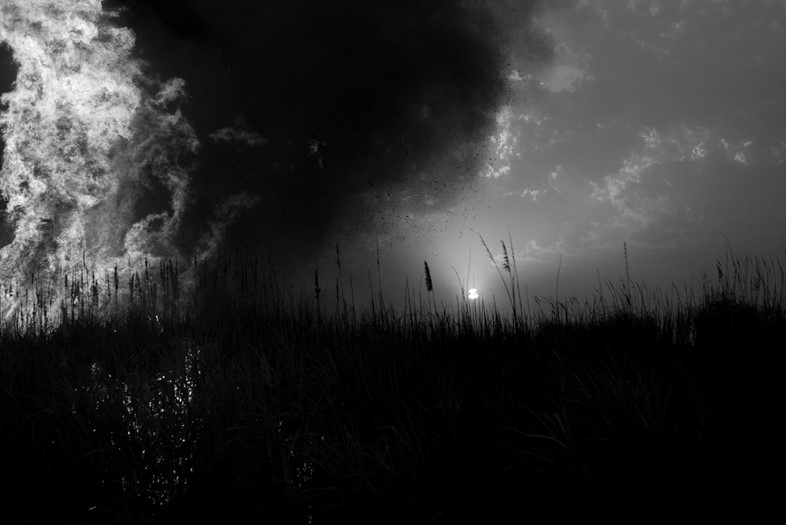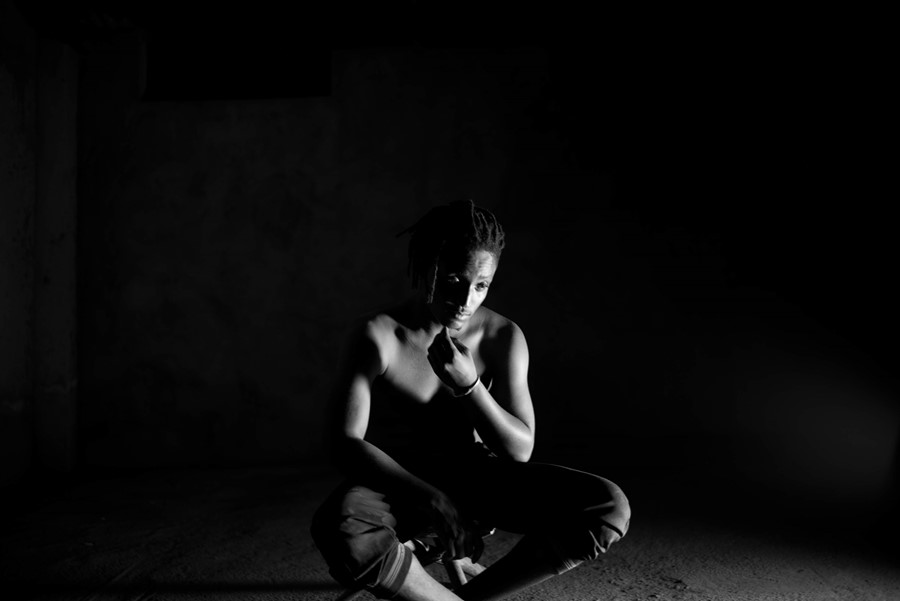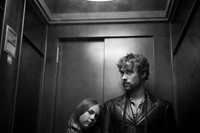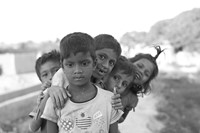As his new exhibition opens in London, Nachson Mimran talks about his photos of tribesmen in Kenya, creative activists in action on refugee camps, and more
When asked about how he got into photography, Nachson Mimran laughs and launches into a story about how he found himself hooked to a Leica Monochrom after an unexpected gift from a friend. It’s an hour before he boards his flight to London for his first solo exhibition, opening today at Leica Gallery London – Nachson Mimran: Photographs From The Decade That Changed My Life. “It was completely by chance. Someone very close to me offered me an M9 Monochrom … This person said, ‘I bought this camera thinking it was an automatic and it was easy and actually, I don’t know how to use it. And you know, you like design, so this is a gift for you.’” For a month, the camera sat on Mimran’s desk, where he displayed it like an art piece, admiring its craftsmanship and design. Until one day, he decided to try his hand at taking photos with it. “I enjoyed that it wasn’t easy,” Mimran says. “I was like, I’m just gonna figure this thing out.”
He explains his love for the camera’s ability to capture the depth of a moment, how the striking drama of black and white photography keeps him devoted to Leica (and within the brand, its M series). “I would never shoot with any other camera. You know, I’m loyal to Leica because it’s just this romantic affair that I’ve had for a long time and they’re just the most incredible cameras and lenses.” Mimran appreciates the sturdy, unpretentious, and discreet design of the Leica camera, its ability to capture an experience without intruding upon it. “In these moments where, you know, I’m not quite sure whether or not I can take a photo, these other cameras are a bit bulkier and they make more noise and they’re just sort of a little bit more infringing on privacy. And Leica’s always been a great camera for photojournalism and street photography, probably for that reason because it’s stealthy.”
Years after picking up his first Leica, the philanthropist, entrepreneur, and creative director has developed a photography practice closely embedded to his vocational work, documenting invaluable moments within his many adventures. As such, his solo show captures the diversity of a full life: tribesmen in Kenya sitting in a field, creative activists in action on refugee camps, Mimran’s own children playing among dried leaves. Moments from Mimran’s philanthropic endeavours offer glimpses into refugee camps and rural settlements in places like the Amazon, Uganda, and Bangladesh.

These are juxtaposed with images that feature his experiences as a creative director, working on sustainable projects. (In one photograph we see architect Diébédo Francis Kéré standing by The Throne: a portable toilet made of plastic medical waste parked outside Mimran’s hotel in Switzerland, the Alpina Gstaad). Mimran runs to.org: a platform that operates in venture capital, philanthropy, and the creative space. Its focus is to find solutions to world issues, with a particular interest in sustainability and climate change. In line with his platform’s philosophy, Mimran is not selling his prints, but is instead requesting donations to To:Foundation – all donations will be going towards initiatives that support creatives living in refugee settlements, and those who donate £1,000 or more will be gifted a print of their choice. (A GoFundMe link is available here.)
Ultimately, it’s his work at to.org (in partnership with his brother Arieh) that marks the decade that changed his life. These years have been spent travelling to faraway places, embarking on projects, and meeting activists, entrepreneurs, and changemakers. “A lot of my pictures come from being in the presence of these incredible individuals,” Mimran says, in sharing what he documented from the decade that changed his life. “That’s really what motivates me. I love people. Sometimes there’ll be a landscape here or there, but it’s really this relationship with people who I admire and who show, through their work, a high level of grit, a persistence, a resourcefulness, a generosity … and that’s what I try to capture with my lens.”

One of Mimran’s favourite images in the collection is a portrait of the leader of the Sápara Nation in the Amazon, Manari Ushigua. Wearing a traditional Indigenous headdress, Manari raises a fist to the camera, looking both calm and defiant. “This photo was taken a few hours after my morning bath in the river, where I had seen an anaconda, and I remember Manari telling me right away, don’t worry, she ate already. With so much confidence and composure and trust in the systems and being in tune with nature and its species.” Mimran was wearing a Togetherband – a bracelet made for to.org’s social action campaign to engage with the United Nations’ Sustainable Development Goals. The particular Togetherband he had on symbolised goal number seven: clean, affordable energy for all. “It was by chance that I was wearing that one and, you know, it couldn’t be more fit for Manari because obviously Manari fights against extractive industries in the Amazon… and so you know, I put this bracelet on him and immediately he just put his hand up and said, ‘I’m with goal number seven. This is one of the most important things for the Amazon.’ And you know, that day was just a magical day. I’ll always remember that moment. That was a powerful photo.”
Nachson Mimran: Photographs From The Decade That Changed My Life is on show at Leica Gallery London until February 11.






